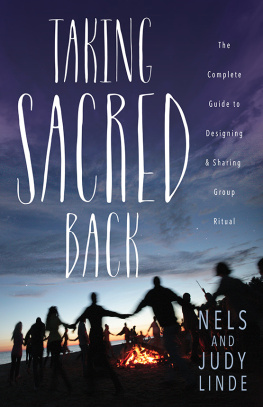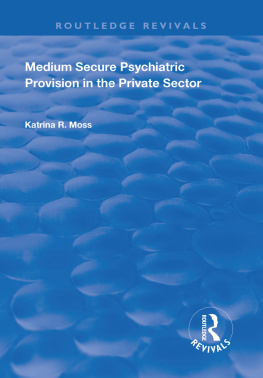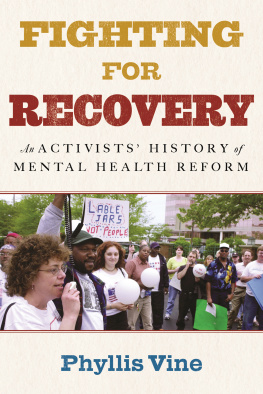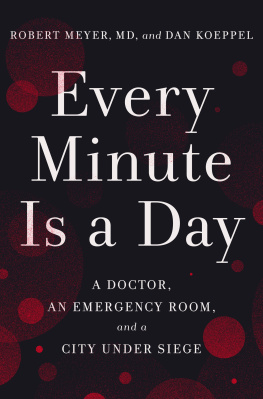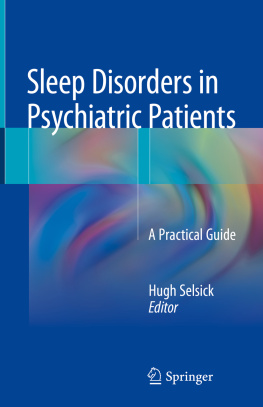DANGER TO SELF
DANGER TO SELF
ON THE FRONT LINE
WITH AN ER PSYCHIATRIST
PAUL R. LINDE, MD

University of California Press, one of the most distinguished university presses in the United States, enriches lives around the world by advancing scholarship in the humanities, social sciences, and natural sciences. Its activities are supported by the UC Press Foundation and by philanthropic contributions from individuals and institutions. For more information, visit www.ucpress.edu .
University of California Press
Berkeley and Los Angeles, California
University of California Press, Ltd.
London, England
2010 by Paul R. Linde
Library of Congress Cataloging-in-Publication Data
Linde, Paul R.
Danger to self : on the front line with an ER psychiatrist / Paul R. Linde.
p. cm.
Includes bibliographical references.
ISBN 978-0-520-24984-4 (cloth : alk. paper)
1. Psychiatric emergenciesPopular works. I. Title.
[DNLM: 1. Emergency Services, PsychiatricPersonal Narratives. 2. Crisis InterventionPersonal Narratives. 3. Mental DisordersdiagnosisPersonal Narratives. 4. Mental DisorderstherapyPersonal Narratives. 5. Mentally Ill PersonspsychologyPersonal Narratives. 6. Physicians RolePersonal Narratives. WM 401 L7427d 2010]
RC480.6.L557 2010
616.89'025dc22 2009006144
Manufactured in the United States of America
19 18 17 16 15 14 13 12 11 10
10 9 8 7 6 5 4 3 2 1
This book is printed on Cascades Enviro 100, a 100% post consumer waste, recycled, de-inked fiber. FSC recycled certified and processed chlorine free. It is acid free, Ecologo certified, and manufactured by BioGas energy.
For my boys, Jacob and Sam
True happiness, we are told, consists in getting out of ones self; but the point is not only to get outyou must stay out; and to stay out you must have some absorbing errand.
Henry James, Roderick Hudson, 1875
CONTENTS
ACKNOWLEDGMENTS
I especially thank the gracious writers, readers, and editors who vetted various drafts of the manuscript and spent precious hours helping me to conceptualize, contextualize, and process not only a whole lot of technical information but also emotionally laden material, of which there was no shortage.
Much credit is due to my colleagues in the Sanchez Writers Grotto, especially its mastermind, Doug Wilkins, and writers extraordinaire Kemble Scott, Shana Mahaffey, Diane Weipert, Michael Chorost, Raj Patel, Melodie Bowsher, Alison Bing, Rob Tocalino, Sean Beaudoin, Michelle Gagnon, Ammi Keller, Bernice Yeung, Eric Tipler, and Joshua Citrak.
Other important readers and motivational figures include Paul Cohen, Audrey Ferber, David Brendel, Ellyn Saks, Tanya Luhrmann, Frank Huyler, Adam Bluestein, Ian Wheeler-Nicholson, Vikram Patel, Gauri Divan, Katherine Straznickas, Jeb Berkeley, and Paul Jones. Jane Dystel and Miriam Goderich gave me tremendous momentum while helping me deliver this project from the depths of my unconscious, and occasionally insane, mind.
Two colleagues, Bob Buckley and Isadore Talesnick, provided me with valuable interview material. Appreciation is also due to my physician colleaguesDrs. Buckley, John Rouse, Katrina Peters, John Harbison, John Herbert, Jo Ellen Brainin-Rodriguez, Laurie Richer, Rick Patel, Eric Woodard, David Elkin, Mark Schiller, Evan Garner, Elias Aboujaoude, Brad Novak, John Herbert, Jim Manning, Chad Peterson, Mark Leary, Francis Lu, James Dilley, and many others. Craig Van Dyke, Bob Okin, and Nicole Sawaya were also very helpful.
I also thank my multidisciplinary colleagues at San Francisco General Hospitalnurses, psych techs, social workers, support staff, students, interns, residents, and the all-time MVP of the place, Romeo Taglefor making my time in psych emergency memorable and, when not gut-busting, gut-splitting.
My personal editor, Amy Bianco, was incredibly kind to help me sharpen my concepts, polish my language, and figure out the chapter order.
I very kindly thank my editor at the University of California Press, Naomi Schneider, who saw potential in a somewhat nebulously formulated book proposal. Im glad she took a chance on me and had enough of that vision thing to help me get this thing done. I am also grateful to Laura Harger and Bonita Hurd for making the book clearer, cleaner, and more appealing.
In particular, I am indebted to my father, Lew Linde, and my now-deceased mother, Marcella Ruhr Linde, and my brothers and sisters, Ken, Kay, Rick, and Sara, back in Minnesota. Special gratitude goes to all my wonderful friends in San Francisco and elsewhere, my boys, Jacob and Sammy, and, of course, my wife, Laurie Schultz. Without her support, the ideas for this book would never have come to fruition. Thank you.
PREFACE
NOWHERE TO HIDE
A doctor, however, who would still interpret his own role mainly as that of a technician would confess that he sees in his patient nothing more than a machine, instead of seeing the human being behind the disease!
Viktor Frankl, Mans Search for Meaning
I love my job when Im not there. Im a doctor in the psych emergency room at San Francisco General Hospital (SFGH). One reason I work there is that when Im not there, Im not there. I have a decent shot at separating out my jobs trauma and drama from the rest of my life. But in my workplace, theres nowhere to hide.
Our staff room, which provides a slight refuge, is dominated by a huge table, dozens of mailboxes and forms along one wall, a copier, a fax machine, shelves of books, a little sink (over which hangs the requisite Your mother doesnt work here sign), a microwave, a tiny fridge, an illicit toaster, food and drink remnants, and the computer monitors on which we keep electronic medical records. Up to fifteen administrators, staff members, interns, residents, and students might be stuffed in this approximately ten-by-fourteen-foot place at any one time. The space is not secured within a Plexiglas fish bowl, as are staff rooms in many psychiatric units, but instead is open to the patients, walled off only by a modest counter and half-door about four feet high. Patients do wander in from time to time, and at least two have been known to jump the wall in a single boundone to sucker punch a nurse, the other to escape out of a slightly ajar first-story window. Its a twenty-four-seven, all-day-every-day place.
The SFGH Psychiatric Emergency Service (PES) is primarily an evaluation unit for patients involuntarily held for up to three days for a psychiatric assessment and a period of observation. More than half of our patients have been detained, under civil but not criminal code, and brought in by the police. Californias Welfare and Institutions Code section 5150 provides the legal justification for a person to be involuntarily taken into custody for up to seventy-two hours to evaluate whether he or she is a danger to self, a danger to others, and/or gravely disabled because of a psychiatric illness.
Many patients feel, often justifiably, that they are treated as miscreants when their only crime is that of suffering symptoms of mental illness. As you can imagine, an individual confined on these grounds may be upset, to put it mildly, about being locked up against his or her will in the absence of criminal charges.
The front door to the place is lockedyou need a key to get in and out, unless you get buzzed through a double set of doors separated by a sally port. Its not unlike a DMZ. Before entry, police officers check their guns, placing them in a small lockersimilar to a bank safety deposit boxbuilt into the wall outside the front door of psych emergency.
Next page

